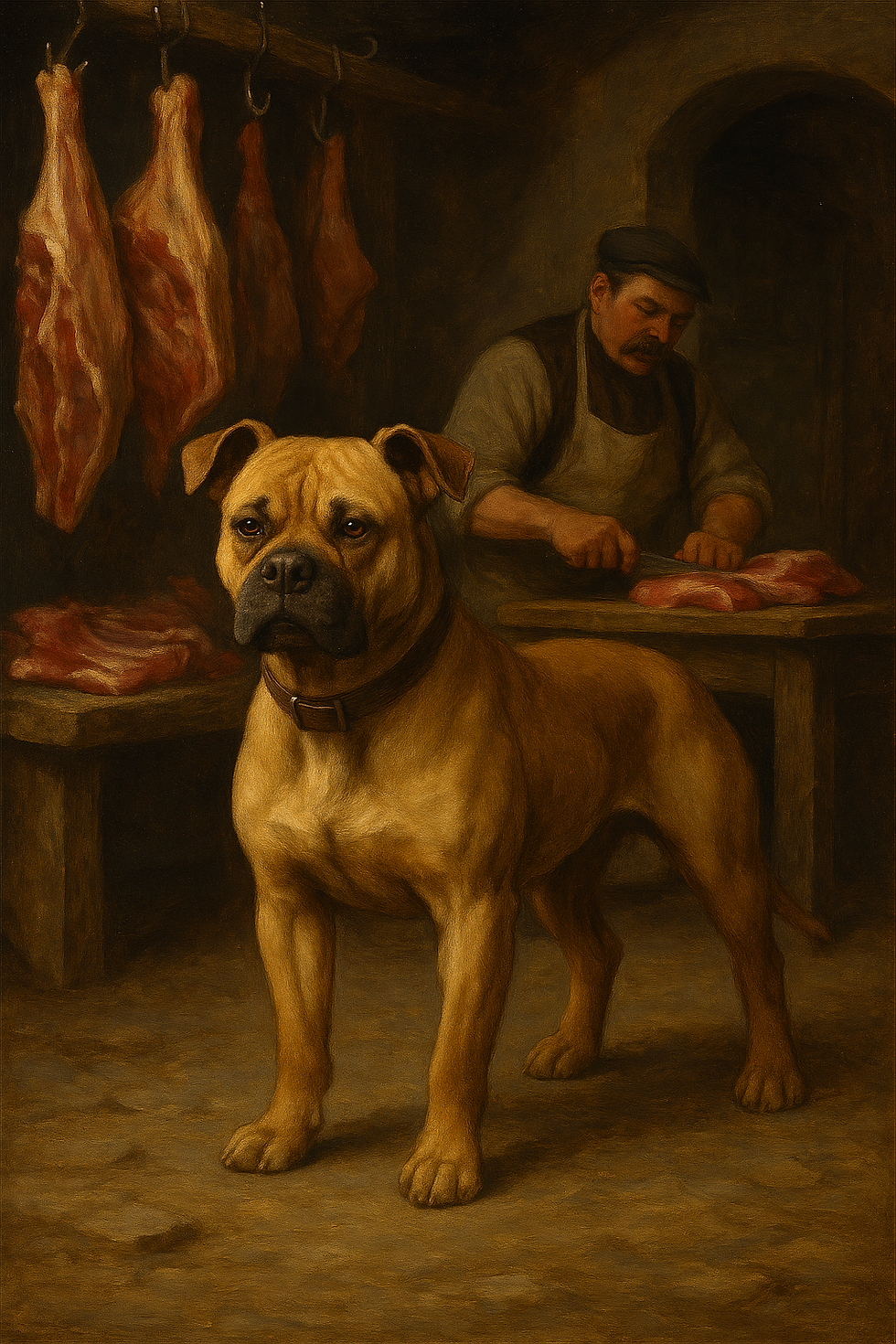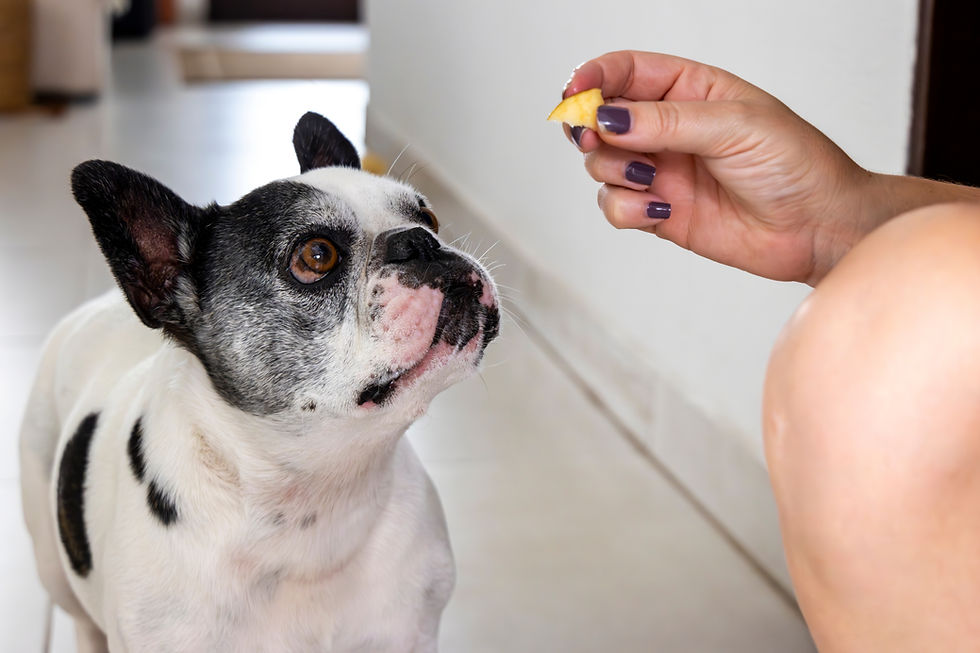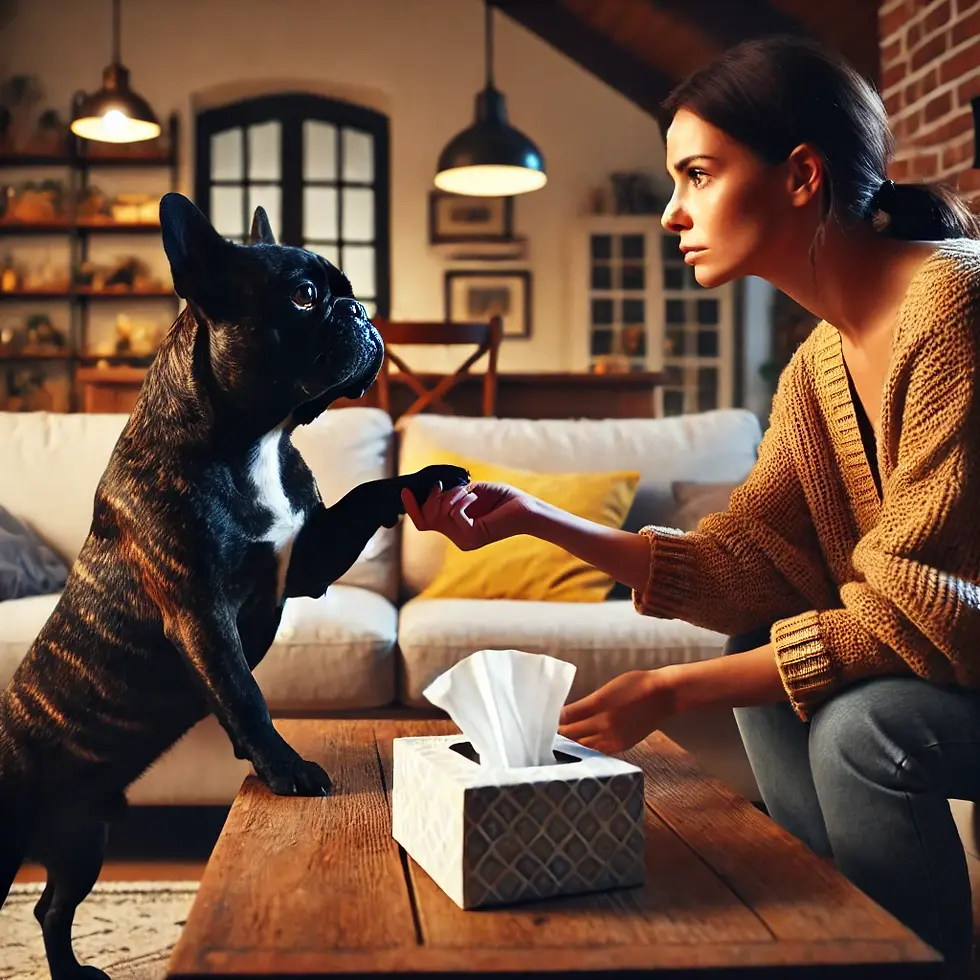Understanding the Canine Ladder of Communication: Building a Stronger Bond with Your Dog
- heathergi85
- Sep 18, 2024
- 5 min read
Updated: Oct 10, 2024

Dogs are constantly communicating with us, though not always in ways that humans immediately recognise. One of the most insightful tools to understand how our canine companions express themselves is the Canine Ladder of Communication. Developed as a visual guide, this ladder helps dog owners and professionals alike interpret the subtle and not-so-subtle signals that dogs use to express their discomfort, stress, or agitation. Recognising these signs early can prevent escalation into more serious behaviours like biting.
What Is the Canine Ladder of Communication?
The Canine Ladder of Communication is essentially a hierarchy of behaviours that dogs display when they're feeling uneasy. At the lower rungs of the ladder, you'll notice subtle signs—these are mild stress signals that dogs use to communicate discomfort or anxiety. If these signals are ignored or misunderstood, the dog may feel the need to escalate up the ladder, showing more obvious behaviours that can eventually lead to aggression.
The ladder isn’t just about stress; it’s about communication. By understanding these signs, we can respond in ways that help our dogs feel safe, supported, and comfortable.
The Ladder’s Steps: From Subtle to Serious
Yawning, Lip Licking, Blinking - At the base of the ladder, dogs often use small, subtle signs like yawning, lip licking, or blinking. These behaviours can be early indicators that the dog is feeling uncomfortable or mildly stressed. Many of these signals are easy to miss but are important whispers from your dog that they need space.
Turning Head Away, Avoiding Eye Contact - As stress increases, dogs may turn their head away or avoid eye contact. These polite, non-confrontational signals are the dog's way of saying, “I don’t feel comfortable, please back off.”
Turning Body Away, Sitting, Pawing, Walking Away - If the earlier signals are ignored, dogs may escalate to turning their whole body away, sitting down, pawing at the ground, or walking away from the source of discomfort. This is an effort to physically create space and avoid further confrontation.
Creeping, Ears Back/Down, Cowering, Tail Down, Whale Eye - As stress levels rise, a dog may start to display more noticeable behaviours such as creeping with their body low, ears back or down, cowering, tucking their tail, or showing the "whale eye" (where the whites of the eyes become visible). These are clear signs of heightened anxiety, and the dog is trying to communicate they feel cornered or overwhelmed.
Lying Down, Leg Up - A dog that lies down with one leg raised is trying to show submission or appeasement. While some people might interpret this as the dog being relaxed, it’s actually a signal that they are feeling vulnerable or anxious and are trying to diffuse a tense situation.
Stiffening Up, Staring, Lip Curl, Quiver, Growling - As the situation escalates, a dog might stiffen its body and begin to stare. These behaviours indicate that the dog is preparing to take defensive action if their discomfort continues to be ignored. A lip curl or quiver is a warning—your dog is communicating that they’re uncomfortable and may take further action if their signals are ignored. Growling is another crucial warning signal that tells you the dog is reaching their limit.
Air Snapping, Biting - If all previous signals are missed, the dog may air snap—a clear warning shot, signalling that they are on the verge of biting. If their attempts at communication are still ignored, the final step is biting. Biting is a last resort, taken when the dog feels there is no other option left to protect themselves.
By recognising and understanding these steps, you can respond to your dog’s subtle signals and help them feel more comfortable before the situation escalates. Spotting early signs and providing your dog with the space they need can prevent stress from turning into aggression.
When Dogs Skip the Early Signs
Unfortunately, not all dogs will go through the ladder step by step. Some dogs, especially those whose early communication signals have been ignored repeatedly, may learn to skip the lower rungs entirely. These dogs may jump straight to more serious behaviours like growling, snapping, or even biting, without offering the more subtle signals first. This can make it seem as if the aggression came out of nowhere, when in reality, the dog has simply learned that their early cues aren't listened to.
For instance, if a dog’s yawning or turning away has been consistently overlooked or punished, they may stop using these signals altogether. Instead, they may feel the need to escalate more quickly to behaviours like freezing, growling, or snapping in order to protect themselves. This is often seen in dogs that have been mishandled or whose discomfort has been dismissed in the past.
Can These Dogs Learn to Communicate Again?
Yes, absolutely. The good news is that with patience, understanding, and positive reinforcement, dogs can relearn that their subtle signals will be noticed and respected. Once a dog realises that their owner or handler is paying attention to their early signs of stress or discomfort, they often feel safer using these behaviours again. Here’s how you can help your dog regain their voice:
Start with Observation: Pay close attention to your dog’s body language, no matter how small the signals might seem. Even a slight lip lick or head turn is worth acknowledging.
Reward Calm Signals: Reinforce your dog when they use these early signals by giving them space or a reward. This will help rebuild their confidence in communicating subtly.
Desensitisation Training: If certain situations cause your dog to jump straight to higher levels of stress, work on desensitising them to those triggers at a pace that they’re comfortable with.
Avoid Punishment: Never punish growling or other higher-level communication. Doing so will only reinforce the idea that their signals will be ignored, and they may feel forced to escalate even further next time.
Why It’s Important to Recognise These Signals
One of the most common misunderstandings between dogs and humans is the failure to recognise early stress signals. We often see growling or biting as "sudden" aggression, but in reality, the dog has likely been trying to communicate for a while.
Learning to spot and respond to the early rungs of the ladder can help prevent stress for your dog and avoid more serious behaviours. For example, if your dog starts yawning, showing whale eye, or turning away during a training session or social situation, it’s time to take a step back and give them some space. This allows the dog to feel heard and respected, which in turn strengthens your bond and builds trust.
How to Help Your Dog Stay Off the Ladder
Give Them Space: If your dog is showing early signs of discomfort, give them the opportunity to retreat to a safe, quiet space.
Use Positive Reinforcement: Reward your dog for calm, relaxed behaviours, and work on desensitising them to stressful situations slowly and at their own pace.
Avoid Punishment: Never punish a dog for growling or other early communication signals. Doing so can push them further up the ladder, eliminating these important warning signs.
Seek Professional Help: If your dog is frequently climbing the ladder of communication, it may be worth consulting a professional trainer or behaviourist. They can help identify the root causes of your dog's stress and provide you with the tools to manage it effectively.
Final Thoughts
The Canine Ladder of Communication is a vital resource for any dog owner looking to understand their pet better. By recognising and responding to your dog’s signals early on, you can help them feel more comfortable and prevent unnecessary stress or aggression. Remember, your dog is always communicating with you—sometimes we just need to learn their language!
If you're interested in learning more about canine body language or need help with your dog’s behaviour, feel free to contact me at Calluna Canines for personalised advice and training. Let's work together to build a happy, confident dog!
_edited_j.jpg)





Comments